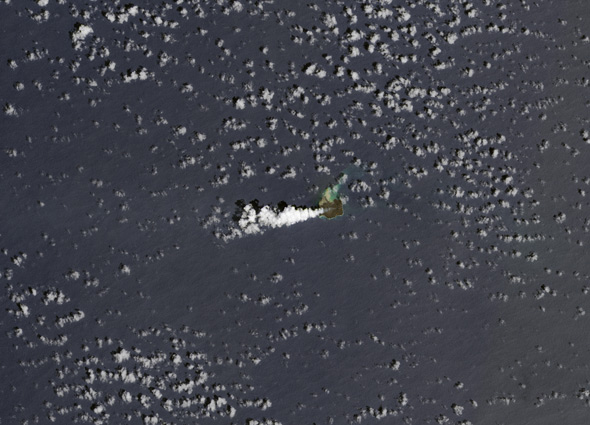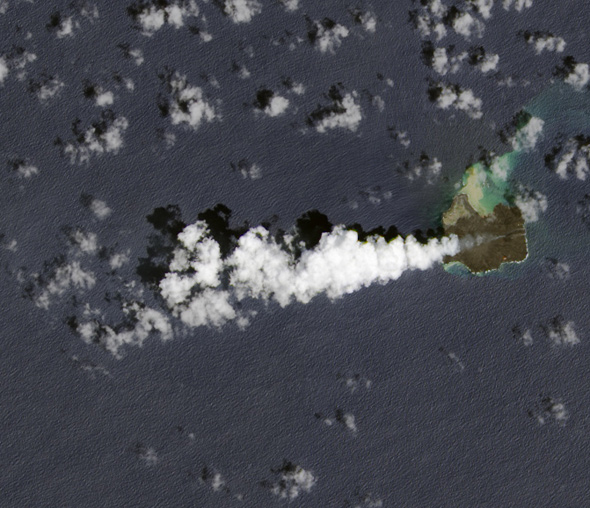An Island Grows in the Ocean

Back in March I posted a Landsat 8 image of a volcano called Nishinoshima, located in the Pacific Ocean about 1,000 kilometers south of Tokyo. Up until late 2013 it was just a dinky island barely poking above the water’s surface. But then a second vent started erupting nearby, rapidly grew in size, and actually engulfed the original volcano.
It’s still growing. This new view from Landsat on Aug. 21, 2014, shows it puffing away:
It’s interesting comparing it to how it looked a few months ago; it’s clearly changed its shape. It’s not growing as rapidly as it once was, apparently, but it’s still getting bigger.
That whole area is loaded with volcanic islands forming seriously long chains across the ocean:
The pin marks the location of Nishinoshima. Of course, that map is scaled way out, covering thousands of kilometers. The original Landsat image gives you a better sense of how lonely the island is out there:

Photo by Jesse Allen, using Landsat data from the U.S. Geological Survey
Pretty. And fascinating. It shows that our planet is active, constantly changing, constantly renewing itself. If it didn’t, we’d probably look a lot more like Mars. That’s a pretty amazing planet too, but given its lack of a thick atmosphere, no water, and chilly room temperature, I’ll take Earth every time. I like my environment habitable, even if it means some locally isolated places really aren’t.


